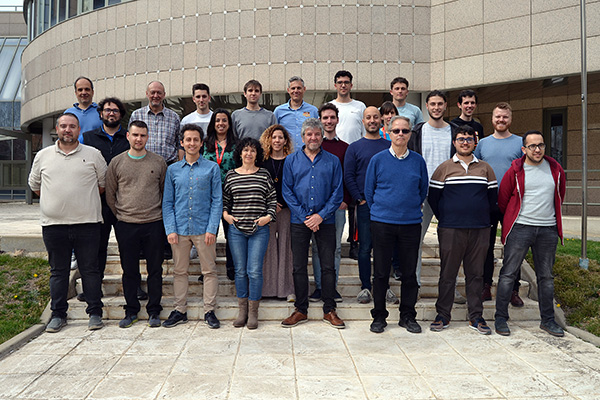With the incorporations of the last months, there are now more than twenty members of this group, which makes it the largest in ICMM.
The Interdisciplinary studies based on nanoscopic systems group (ESISNA), part of the Material Science Institute of Madrid (ICMM), CSIC, has already exceeded twenty members, which makes this the largest group within this research center.

The ESISNA group, led from its origins by José Ángel Martín Gago and currently headed by Paqui López Fagúndez, already has 22 scientists investigating the nanoworld. Among the lines of research of this group, which studies new low-dimensional systems at the nanometric level, the development of methodologies capable of inducing controlled chemical reactions on surfaces, the study of 2D materials of technological interest, the formation of advanced nanoparticles for possible applications, laboratory astrochemistry, etc.
"One of the approaches we follow is to generate new systems of reduced dimensionality through the use of organic molecules that act as building blocks through strategies known as bottom-up", explain the members of the group on their Web page. This group is very aware of the need to acquire valid and robust methodologies for the rational assembly of molecular objects at the nanoscale, carrying out innovative strategies that involve precise control of said nano-objects on model surfaces.
They are also investigating small-dimensional structures that display unique electronic properties, such as graphene, transition metal dichalcogenides, polymer networks and chains, etc. "We linked the atomic structure of surface-synthesized nanoarchitectures and 2D shells with their electronic properties by using a combination of different experimental surface science techniques (STM, LEED, IRS, XPS synchrotron radiation,...) and theoretical methods," they add.
And, as a sign of the interdisciplinarity that characterizes this group, in recent years they have carried out the assembly and fine-tuning of the Stardust experimental machine. This has allowed the ESISNA group to develop research in the field of laboratory astrochemistry, with the aim of revealing the mechanisms that operate in space, simulating in the laboratory the conditions that occur in different regions of the universe.
In addition, thanks to the fact that Stardust has a multiple aggregate manufacturing source, ultra-pure nanoparticles of different materials can be generated, being able to precisely control their size and composition. These nanoparticles are of great interest for technological applications, covering fields as diverse as sustainable energy or health.
For more information about the people who make up this group and their lines of research, you can visit their website.